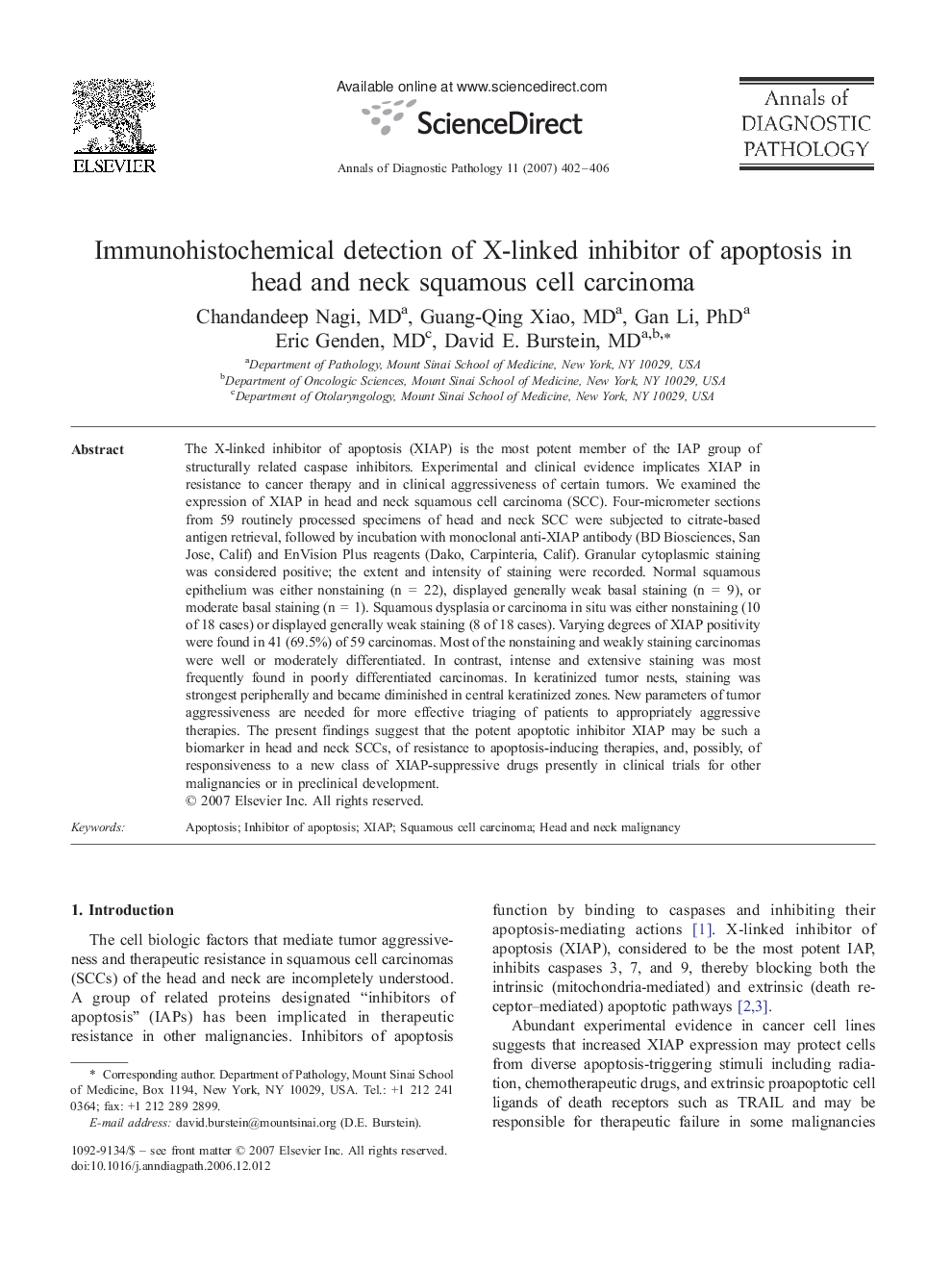| Article ID | Journal | Published Year | Pages | File Type |
|---|---|---|---|---|
| 4130698 | Annals of Diagnostic Pathology | 2007 | 5 Pages |
The X-linked inhibitor of apoptosis (XIAP) is the most potent member of the IAP group of structurally related caspase inhibitors. Experimental and clinical evidence implicates XIAP in resistance to cancer therapy and in clinical aggressiveness of certain tumors. We examined the expression of XIAP in head and neck squamous cell carcinoma (SCC). Four-micrometer sections from 59 routinely processed specimens of head and neck SCC were subjected to citrate-based antigen retrieval, followed by incubation with monoclonal anti-XIAP antibody (BD Biosciences, San Jose, Calif) and EnVision Plus reagents (Dako, Carpinteria, Calif). Granular cytoplasmic staining was considered positive; the extent and intensity of staining were recorded. Normal squamous epithelium was either nonstaining (n = 22), displayed generally weak basal staining (n = 9), or moderate basal staining (n = 1). Squamous dysplasia or carcinoma in situ was either nonstaining (10 of 18 cases) or displayed generally weak staining (8 of 18 cases). Varying degrees of XIAP positivity were found in 41 (69.5%) of 59 carcinomas. Most of the nonstaining and weakly staining carcinomas were well or moderately differentiated. In contrast, intense and extensive staining was most frequently found in poorly differentiated carcinomas. In keratinized tumor nests, staining was strongest peripherally and became diminished in central keratinized zones. New parameters of tumor aggressiveness are needed for more effective triaging of patients to appropriately aggressive therapies. The present findings suggest that the potent apoptotic inhibitor XIAP may be such a biomarker in head and neck SCCs, of resistance to apoptosis-inducing therapies, and, possibly, of responsiveness to a new class of XIAP-suppressive drugs presently in clinical trials for other malignancies or in preclinical development.
